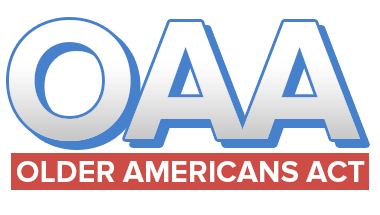Acronyms (colloquial) OAA Public law 89-73 | Effective July 14, 1965 Founded 2005 | |
 | ||
Long title An Act to provide assistance in the development of new or improved programs to help older persons through grants to the States for community planning and services and for training, through research, development, or training project grants, and to establish within the Department of Health, Education, and Welfare an operating agency to be designated as the "Administration on Aging". Nicknames Older Americans Act of 1965 Enacted by | ||
Older americans act of 1965
The Older Americans Act of 1965 (Pub.L. 89–73, 79 Stat. 218) was the first federal level initiative aimed at providing comprehensive services for older adults. It created the National Aging Network comprising the Administration on Aging on the federal level, State Units on Aging, and Area Agencies on Aging at the local level. The network provides funding - based primarily on the percentage of an area's population 60 and older - for nutrition and supportive home and community-based services, disease prevention/health promotion services, elder rights programs, the National Family Caregiver Support Program, and the Native American Caregiver Support Program.
Contents
- Older americans act of 1965
- Reauthorize older americans act
- Overview
- Legislative Process
- Structure
- Demographics
- Programs created
- Amendments to 1965 Act
- References
The United States Statutes at Large 79 Stat. 218 was signed into law by the thirty-sixth President of the United States Lyndon Johnson on July 14, 1965.
In 2006 congress reauthorized the act in its entirety, effective through FY 2011.
Reauthorize older americans act
Overview
The OAA was passed as a part of Lyndon Johnson's Great Society reforms. It followed closely behind the Civil Rights Act and the Economic Opportunity Act which included many similarly structured programs, based around a centralized network of funding for a decentralized (community level) service delivery system. The OAA was a response to Congressional concerns about the lack of community social services for senior citizens.
Funding for many Great Society programs as well as Johnson’s political capital, dwindled during the Vietnam War. Some programs and agencies were dismantled by later administrations, such as Nixon’s and Ford’s slow dissolution of the Office of Economic Opportunity. Other programs, such as those under the OAA, Medicare, Medicaid, and initiatives in the arts and humanities continue to survive.
The stated purpose of the OAA is to ensure equal opportunity to the fair and free enjoyment of: adequate income in retirement; the best possible physical and mental health services without regard to economic status; suitable housing; restorative and long term care; opportunity for employment; retirement in health, honor, and dignity; civic, cultural, educational and recreational participation and contribution; efficient community services; immediate benefit from proven research knowledge; freedom, independence, and the exercise of self-determination; and protection against abuse neglect and exploitation.
Legislative Process
Representative John E. Fogarty (D-RI) introduced legislation on January 27, 1965 as H.R. 3708. The bill moved through the House and was referred to the House Committee on Education and Labor in March 1965. It passed the House on March 31 on a 395 to 1 roll call vote. The bill established an Administration on Aging (AoA) within the Department of Health, Education and Welfare (HEW).
In the Senate, H.R.3708 was introduced Lister Hill (D-AL). On June 16, the Senate passed H.R. 3708 by a roll call vote of 72 to 5. On July 6, 1965, the House agreed to the Senate’s version of H.R. 3708.
Structure
The act is divided into seven titles.
Demographics
No one over age 60 can be denied services from OAA programs, except on the discretion of the state's State Unit on Aging which may impose more restrictive criteria. In FY 2008 these initiatives provided services to nearly 3 million people, and for FY 2011 the federal appropriation for all programs is $1.9 billion. A disproportionate amount of seniors receiving services (27%) are below the poverty line (compared to 9.7% of the general population over age 60). Recipients of services under OAA are more likely to be female (71% vs. 57% of persons over 60). African Americans are over represented among OAA recipients and all other minorities are under represented. Recipients are also almost twice as likely to be rural, more likely to live alone, and on average have less income, less education, and are less healthy than those persons in the general population aged 60 and over.
Programs created
Amendments to 1965 Act
Chronological amendments and revisions to the Older Americans Act of 1965.
